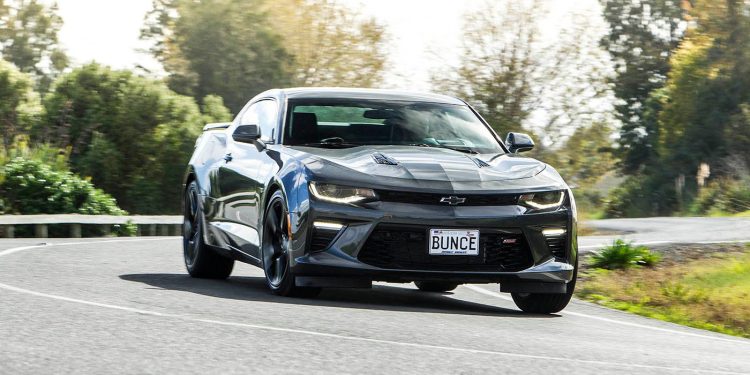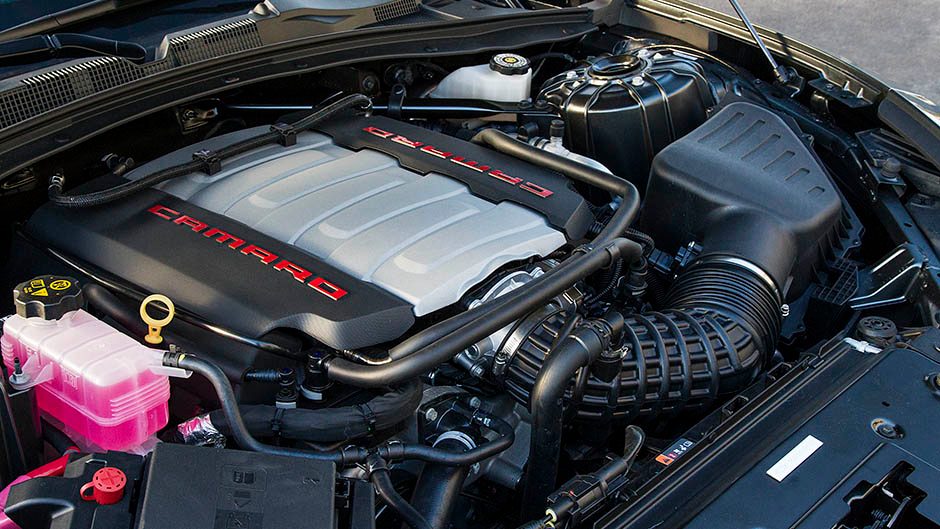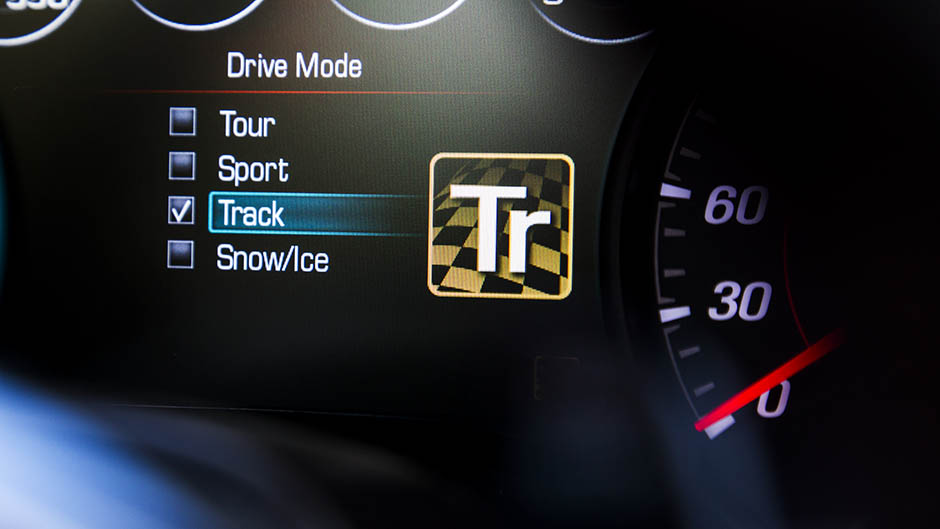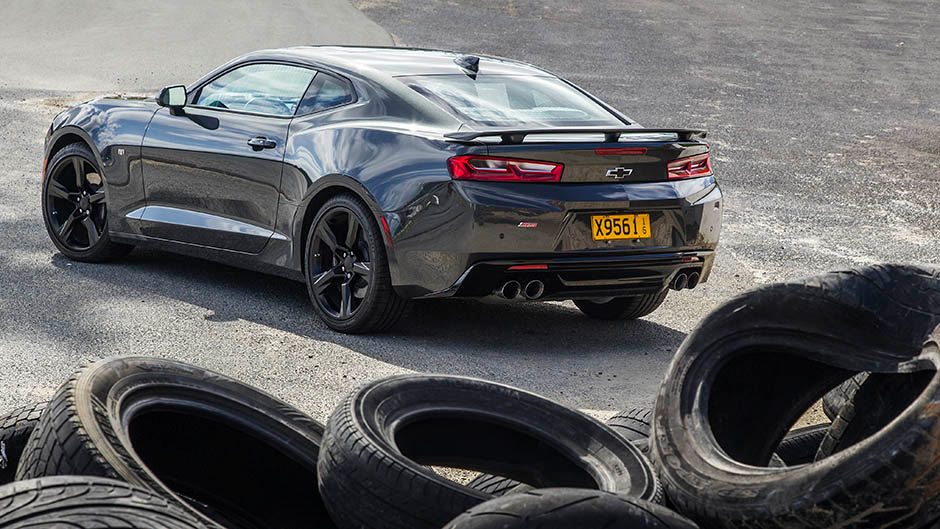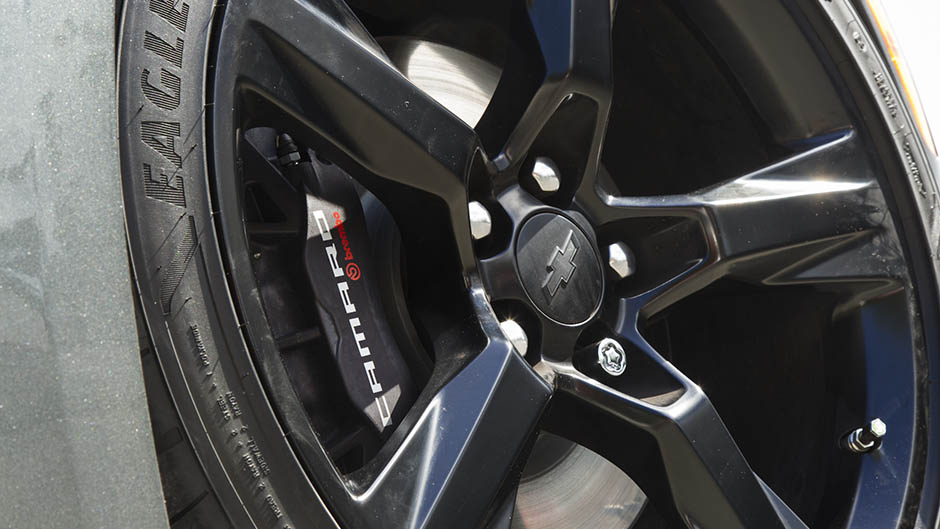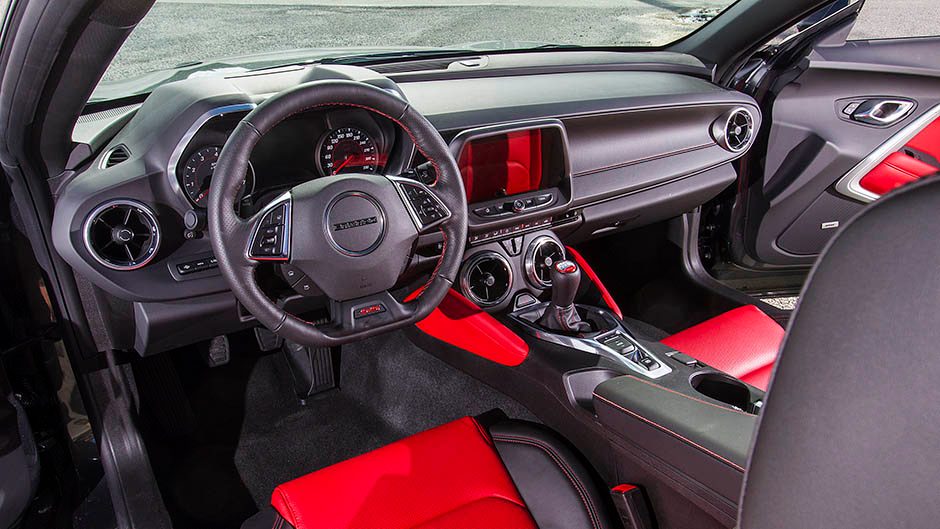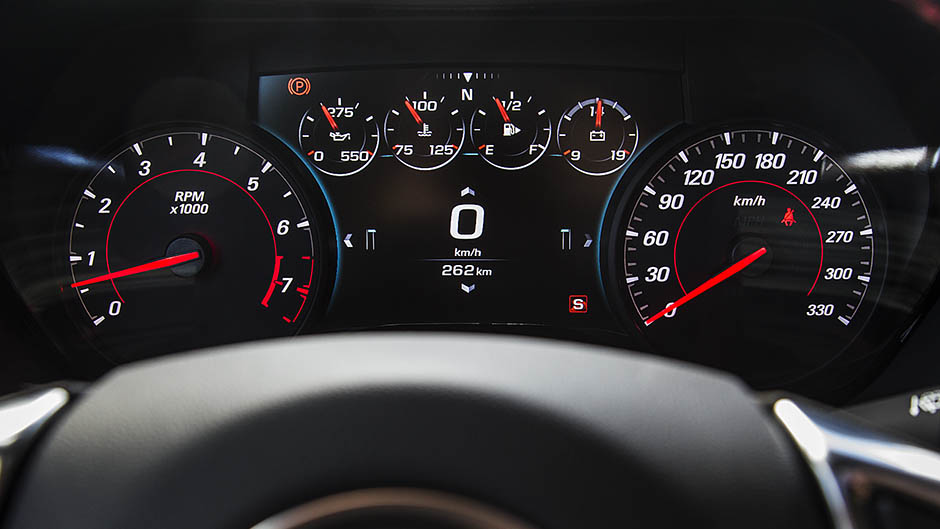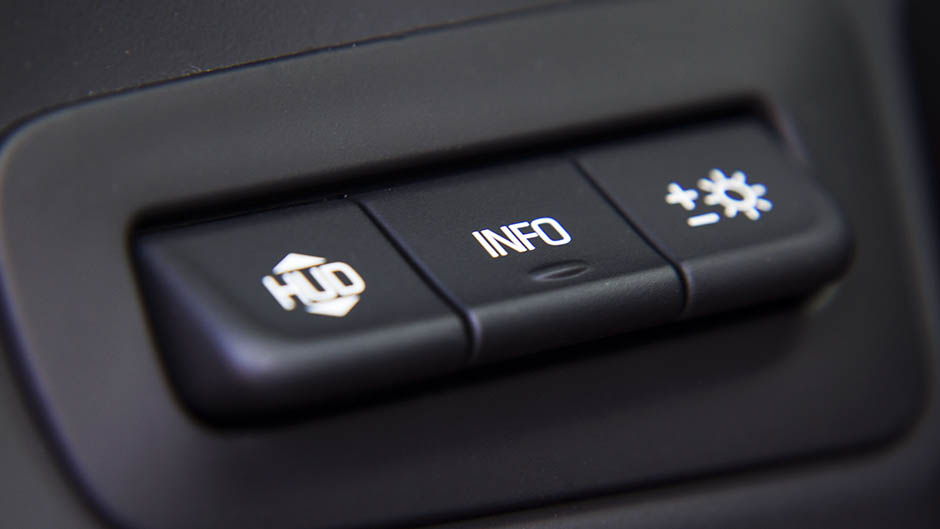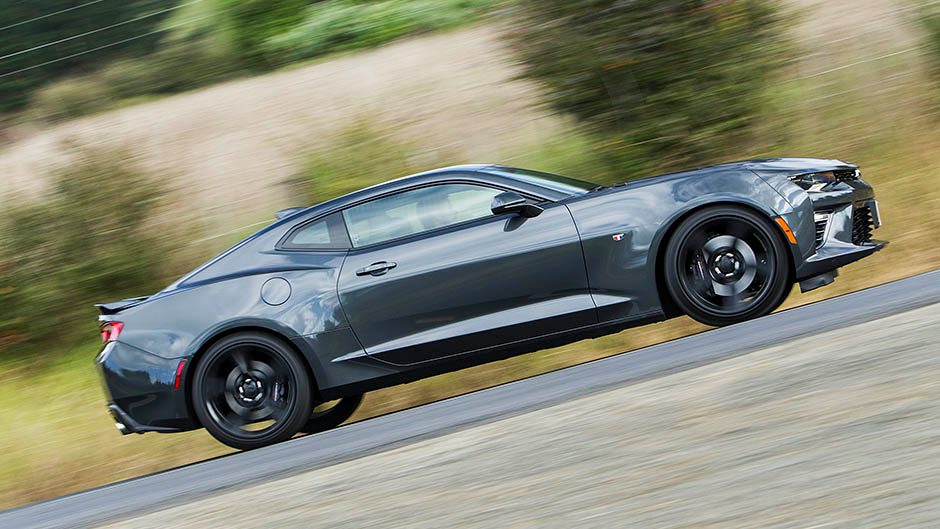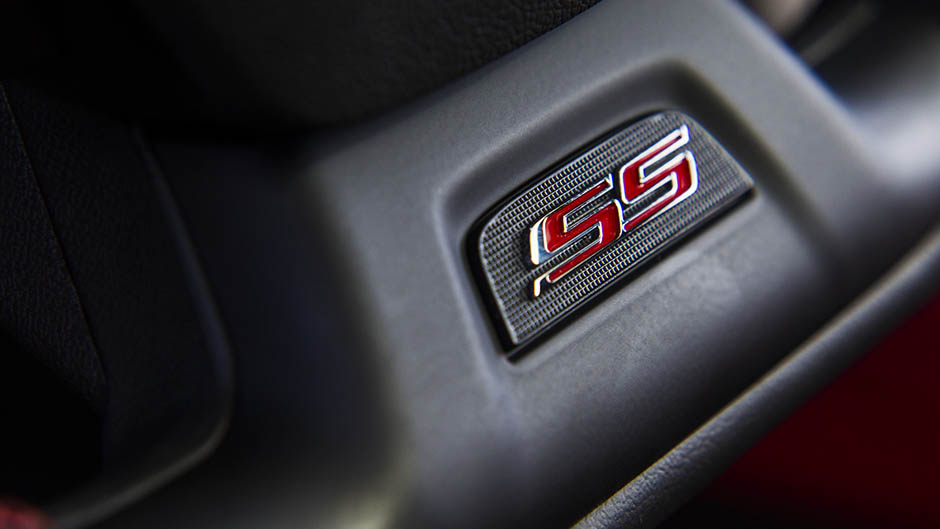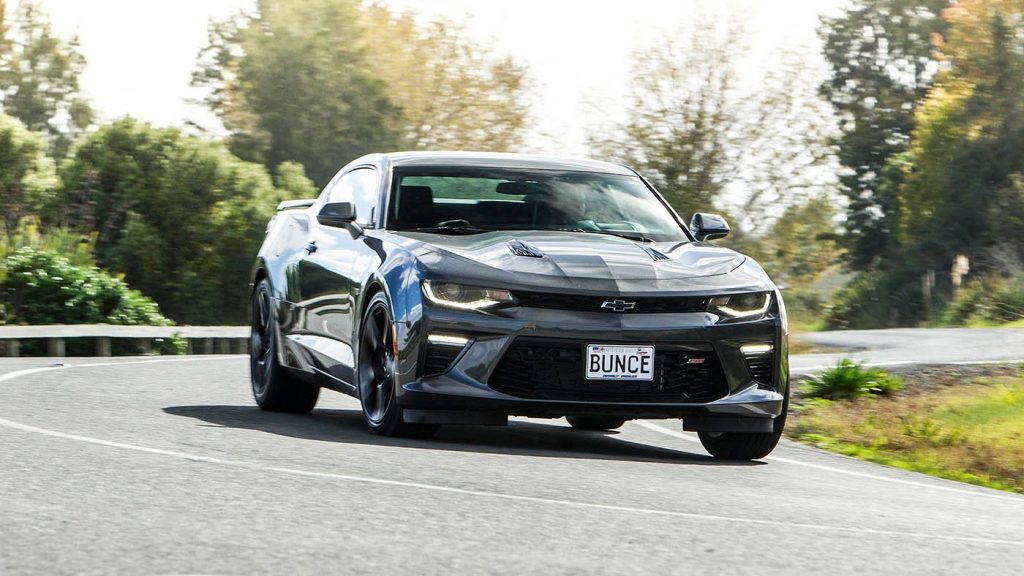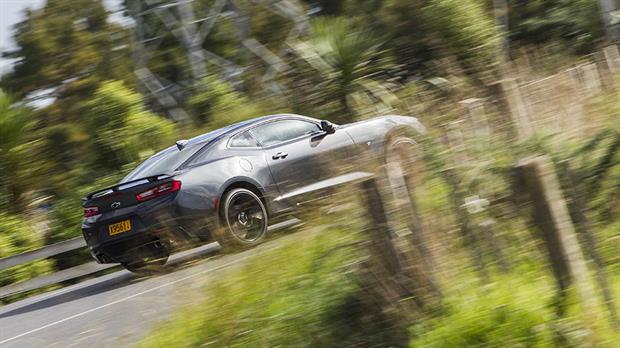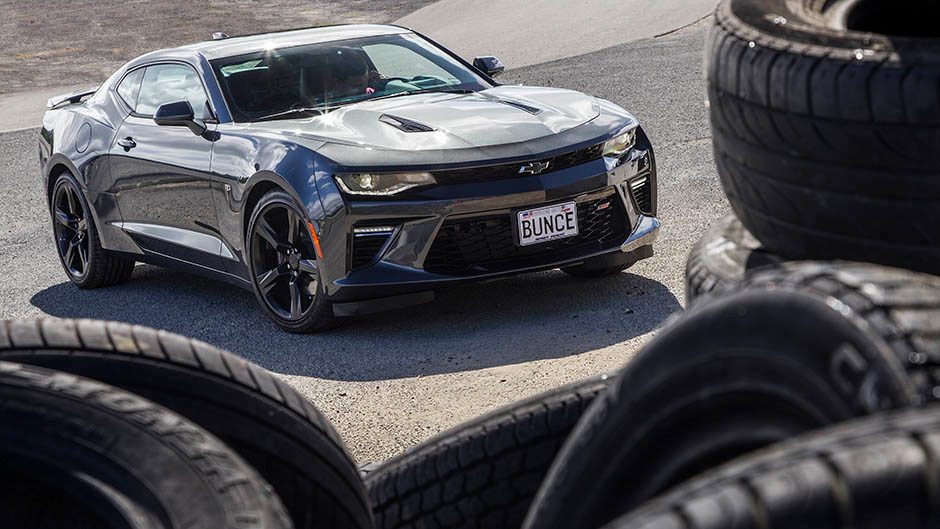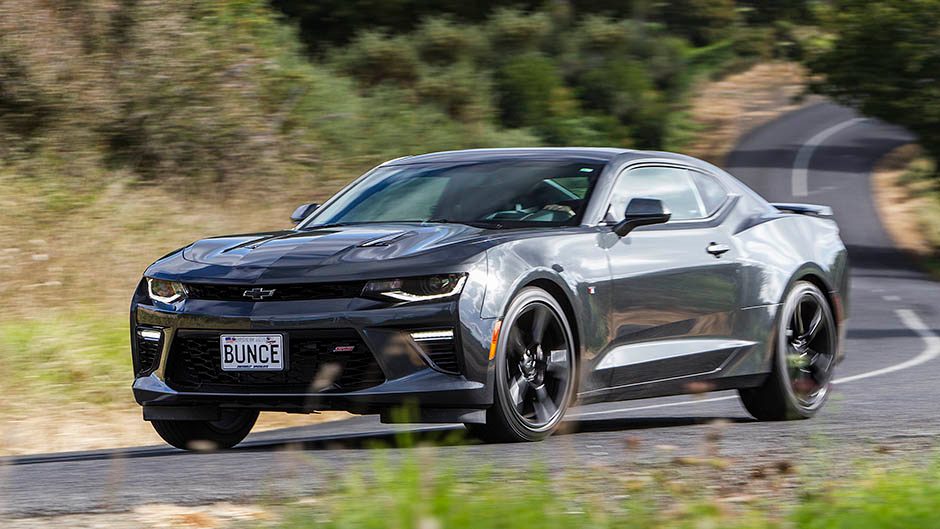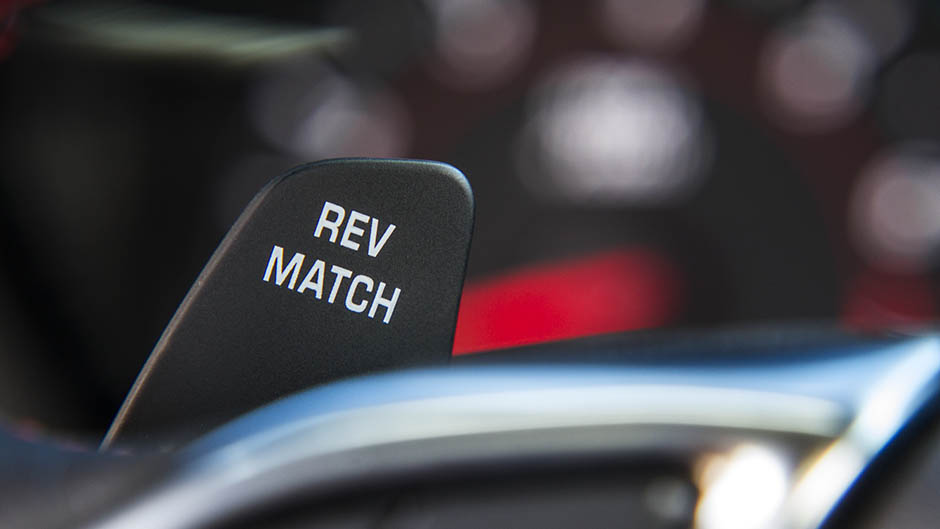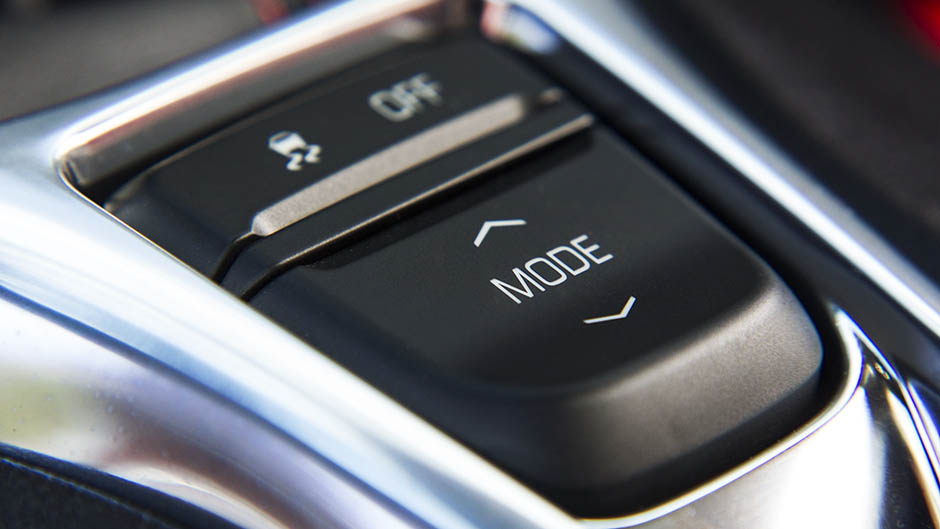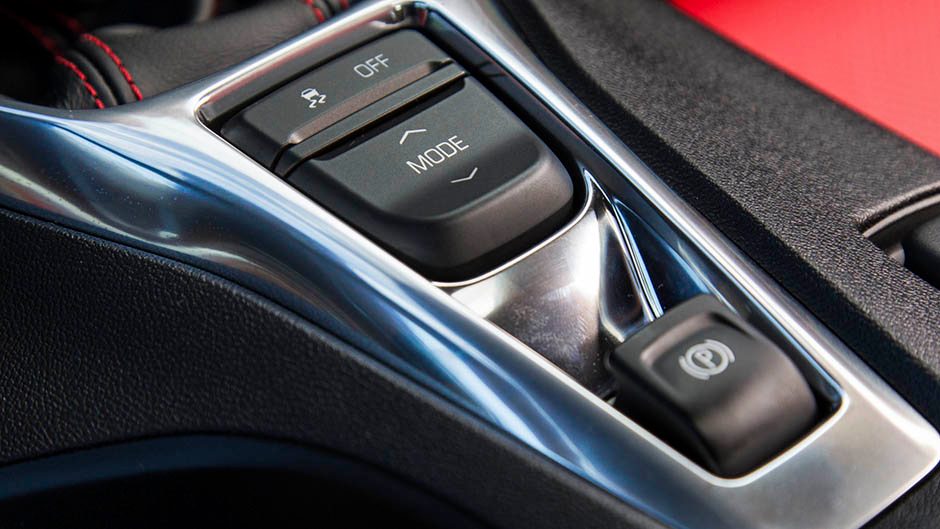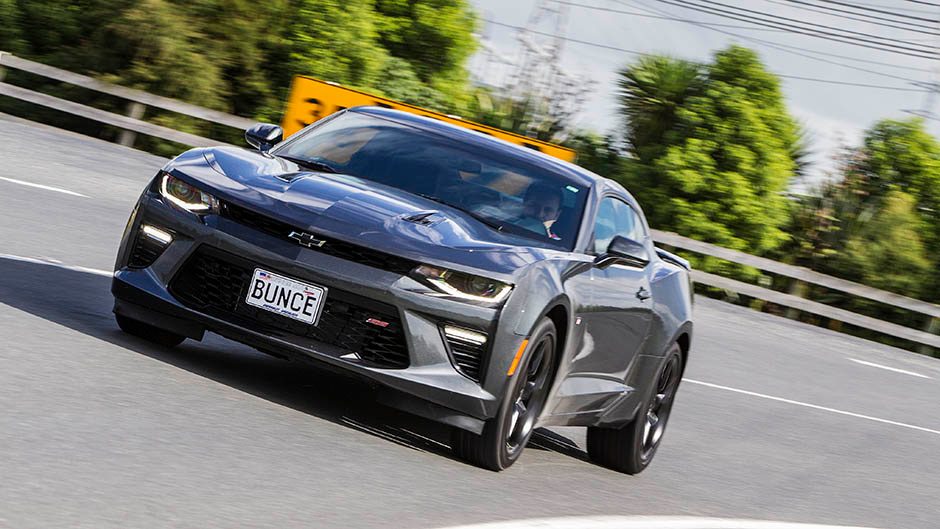2016 Chevrolet Camaro SS review
Words: Kyle Cassidy | Photos: Tom Gasnier
The Camaro nameplate recently turned the big five oh, and the latest generation of GM’s pony car has started to arrive on our shores. We take the top-spec SS for a burn
While the world goes Mustang mad, it seems GM has missed a trick by not offering its new Chevrolet Camaro for global consumption because after sampling the new Gen Six version here in NZ, we found it to be a top sports coupe, yet still with its all-American muscle car soul. GM wanted to lift the dynamic bar with its new Camaro so blessed it with its premium platform, the Alpha, which underpins the likes of the new Caddy ATS and is said to rival the the 3 Series and Jag XE for dynamics.
Tailored to Camaro needs, it’s stretched up front for that long hood look and it’s also wider. It makes for a slightly smaller, lighter car than the previous Zeta-based model. Rigidity is said to have increased by 28 per cent while the body-in-white weight is down by 60kg. The suspension is now mostly alloy with Mac struts featuring a lower, double ball joint arrangement and a multilink set-up at the rear. This top spec 2SS Coupe with the six-speed manual weighed in at 1650kg on the scales. Coincidently that’s 60kg lighter than the 2010 SS we tested.
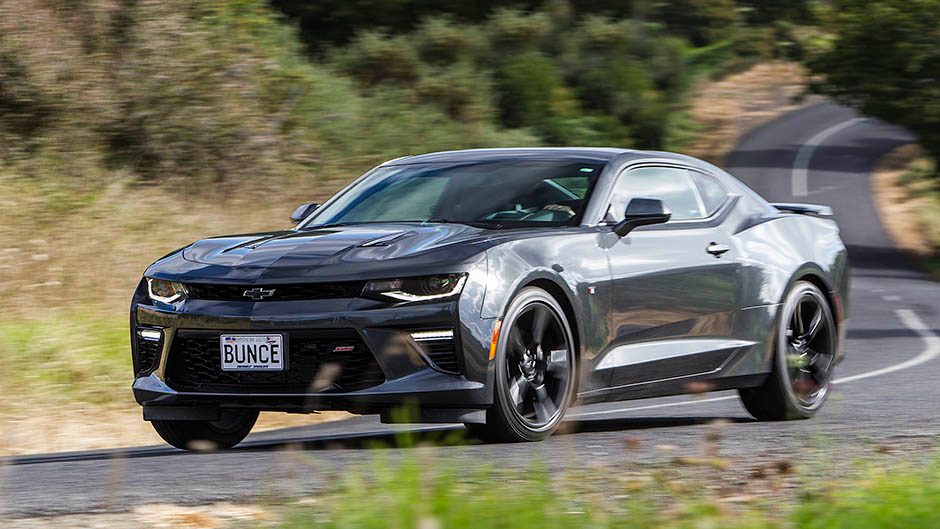
Engine options for the new range include a 2.0-litre, 205kW/400Nm turbo four, a 250kW/385Nm 3.6 V6 but the only one on your wish should be the V8, all 339kW and 617Nm of it. The small block in question is the LT1 from the C7 Corvette, complete with variable valve timing and direct injection. The alloy eight has a special cylinder head design and with smaller combustion chambers than the LS3 and direct injection, this allows for a higher compression ratio of 11.5:1 resulting in bigger bangs and more torque and power.
With easier access to the more abundant torque, the Camaro SS feels more urgent than the Mustang GT, and it sounds more the real deal too. Tall gearing hampers the V8’s ability to really rev fast, and although torque doesn’t peak until 4400rpm, there’s genuine thrust from 3000rpm, and it keeps pumping away right to its 6600rpm limit. It has plenty of ‘touring torque’, the LT1 delivering the lazy pull of an old fashioned V8, rolling on satisfyingly from 90km/h in fifth, whereas sixth is well overdriven (0.50:1).
If you prefer autos, the Camaro SS is available with GM’s Hydra-Matic 8L90, the eight-speeder a handy unit after our experiences with it in the C7 Corvette, particularly when controlled via the shift paddles. It makes for a faster Camaro too, GM quoting 0-60mph in four seconds flat for the auto and 4.3sec for the manual which is a Tremec TR6060 six-speeder. This features ‘Active Rev Match’ technology, activated via what would otherwise be the shift paddles in an auto Camaro. This seems odd at first, but it saves GM finding a place for another button and it’s easy to flick it on and off. We at first preferred to blip the throttle ourselves, that’s what manuals are all about, but the system does a fine job, making for smoother progress, even on the commute, as the pedal placement isn’t ideal for heel and toe action. And the sound of the throttle blips, particularly when slipping it from fifth into third at 100, you’ll never tire of that.
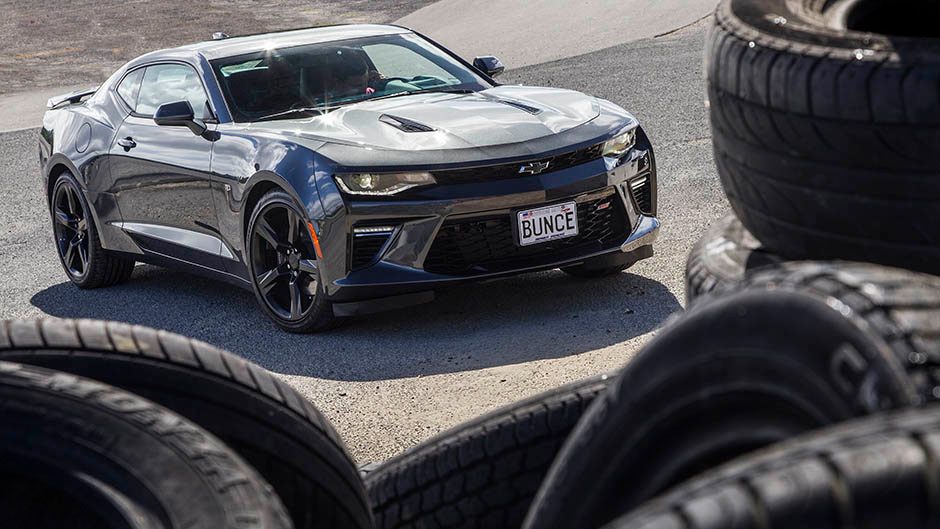
Though it’s a muscle car, big biceps and calves aren’t a prerequisite, the clutch being light, if a little too springy on the return, but with a reasonable bite point. The shifter, cantered over towards you, slots each gear soundly, and doesn’t baulk when rushed. It’s fitted with a skip shifter for economy, the lever slotting from first through to fourth on light throttle applications. Apparently it can be defeated; we would, as it can be annoying. There’s also a hill holder to make commuting easier. In typical muscle car fashion, there’s more go than grip from a standstill, but you wouldn’t want it any other way. W
e failed to work out the launch control – no help from the hand book there either – but even a soft launch has the tyres laying lines. So trying to temper the torque on our usual coarse chip surface, we had to make do with a 4.7sec run after a quick dump of autumnal rain called a halt early to proceedings but its 2.5sec 80-120km/h time puts it in fairly rapid company. For reference, the Mustang GT auto was a pussycat in comparison and returned 5.2s and 3.1s, while the R8 LSA ripped 4.59s and 2.7. The brakes, by Brembo, do the business with a 31m stoppie.
There’s a new Drive Mode selector, with four settings; Snow, Tour, Sport and Track to alter the steering, throttle, exhaust noise via the dual mode system, and damping when optioned with the Magnetic Ride dampers. These are a must, delivering genuine compliancy on the commute in the Tour setting. The latest version of these shockers constantly adjusts and so the Track setting is usable on road as they change to suit the rigours of the path travelled. We toggled between Sport and Track over our test loop, the latter delivering the promise of improved dynamics for the big Camaro. It now dives into bends, it’s primed and ready, there’s no longer the need to wait while it leans over before the suspension settles into its work.
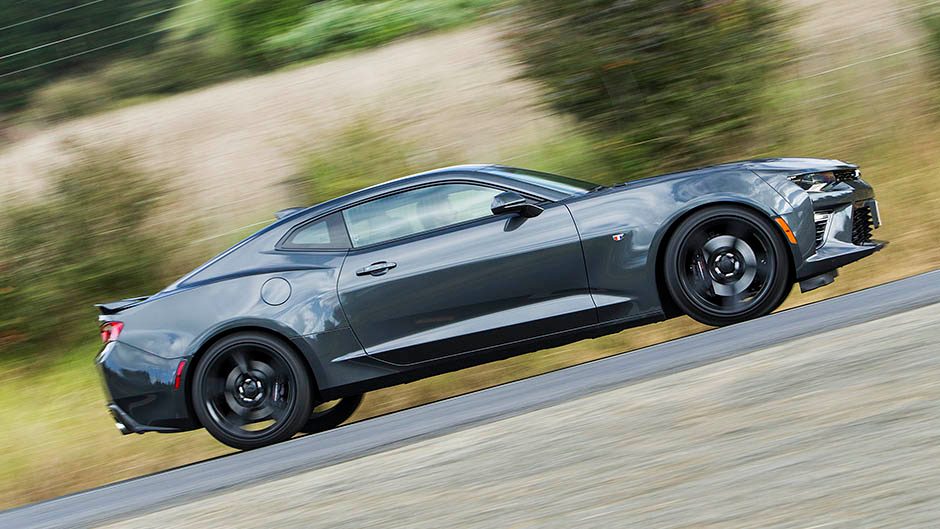
There’s no wrestling with the front end as the turn in is energetic and exact, the weight well stabilised and therefore not overworking those front tyres. Traction control is best disarmed and then you’re able to better rotate the car on the power, making it feel genuinely nimble. If you want more leverage, step the stability control back as well and you’ll get a playful degree or three of slip from the rear. The back end will suffer the odd bump on the exit in Track mode but generally speaking it’s rock solid stable to help give the front end real teeth. You can fire it in fairly hot and have faith it will stick, which is good, as the one thing lacking from the rack is that progressive build-up in the steering as you approach the limit. The brake pedal too could benefit from a more intimate feel, but it sure kills speed when stomped on.
This Camaro can now justifiably pick a fight with the top Euro sports coupes, and is a sportier handler than the Mustang with more grip and power too. There’s some tyre roar to contend with, and you can expect it to guzzle gas but hey, it’s a muscle car. And one with all the endearing traits. It’s stroppy when you gas it hard off the line, fierce down the straights while making one hell of a racket. And with the suspension in its softer setting it will squat classically under power, the front end rising to salute the horizon as the V8 does its thing and you sink back into the seat.
You’ll never ever tire of the sound. It makes a good roar from about 3000rpm, and yet it’s not as loud in the cabin as the Holden Commodore SS. It has the same sound pipe running from the intake to the firewall, but there’s a subtly different note transferred. The bi-modal exhaust can sound a tad flat at cruising speeds, especially in sixth gear, and is suitably hushed in the Touring mode. The valve pops open at 2500rpm in Sport and Track settings, but whereas you wouldn’t think about changing the cans on the Holden, you might be tempted to fiddle with the Camaro’s breathing tubes. We are sure there are plenty of options in the Chevrolet performance catalogue.
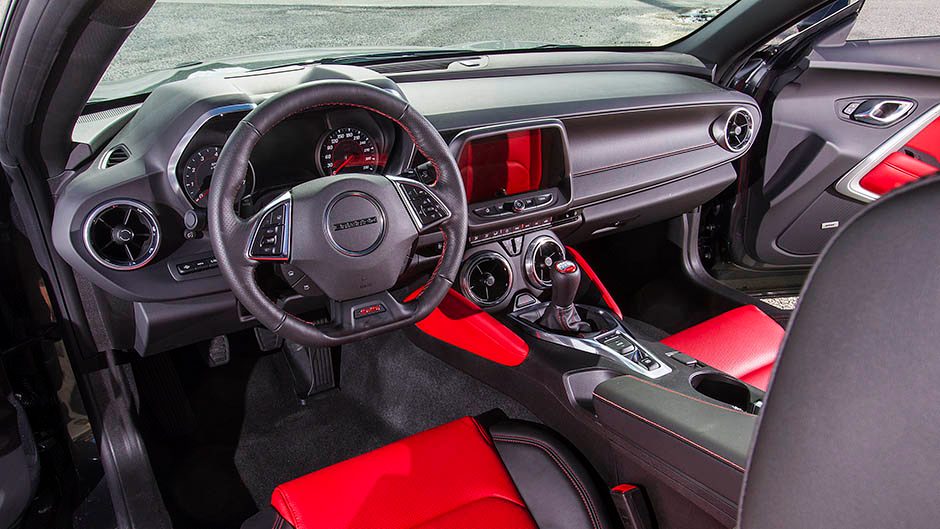
Though it’s all new, it looks quite a bit like the old Camaro. GM has said it designed the car to ensure it appealed to the Camaro faithful, a case of if it ain’t broke… It wears a more sculpted hood, an elegant power bulge amongst the breed, while the front end is more menacing and it still has its impossibly small glasshouse and big hips. The cabin is more modern, ditching those retro cues from the old model, and looks to be constructed with a better quality. It’s still heavy on hard plastics but they at least appear decent, and there’s just enough soft padding about. There are not too many buttons, the air con temp adjusted via the ring surrounding the air vents. Most other aspects are controlled by the infotainment display.
The seats are American; big, wide and comfortable with just a hint of support. The cabin too is wide but light on space; headroom is tight with the optional sunroof and the rear seats are for little leaguers, the access being particularly tight. Its doors are big, so be careful in tight car parks, while the D-shaped steering wheel gives you a bit more knee clearance to help clamber in. The boot, other than the tight opening, is a reasonable size for a coupe and is extended by folding the rear seat down, which helps liberate more exhaust noise. There’s no auto emergency braking but eight air bags are fitted.
The infotainment screen’s most important job is to relay the reversing camera image as the Camaro has poor rearward vision and, without front sensors, parking involves lots of guess work. The blind spot monitoring, head-up display and rear cross traffic alert systems of the 2SS model make it all easier to live with as a left hooker. On that point, this car, from Bunce Motors on Auckland’s North Shore, will remain unconverted and sold under the LHD permit scheme.
While Bunce is a specialist in conversions, with the Mustang GT at $75k, the Camaro would be far too expensive to swap over. But even so, it’s on the market for $99k, so there’s a decent premium asked. It matches the spec of the GT, and adds a smart key, but the best feature is that it’s available; you can buy it now, whereas the wait for the GT will take you out to Christmas. And they’ve sold over 1000 Mustangs, whereas the Camaro will be a rarity. That it powers on hard, and sounds and looks fantastic while going gangbusters will have all the boxes ticked for the atypical buyer. But that it’s moved up the rankings in handling makes it one for driving enthusiasts now too.
| Model | Chevrolet Camaro SS | Price | $99,000 |
| Engine | 6162cc, V8, DI, 339kW/617Nm | Drivetrain | 6-speed manual, rear-wheel drive |
| Fuel Use | 11.5L/100km | C02 Output | n.a. g/km |
| 0-100km/h | 4.73sec | Weight | 1696kg |


